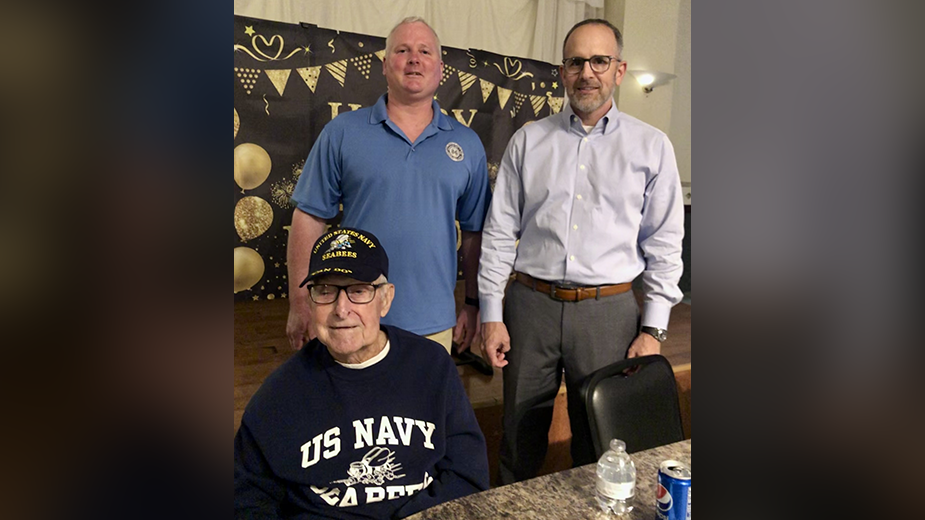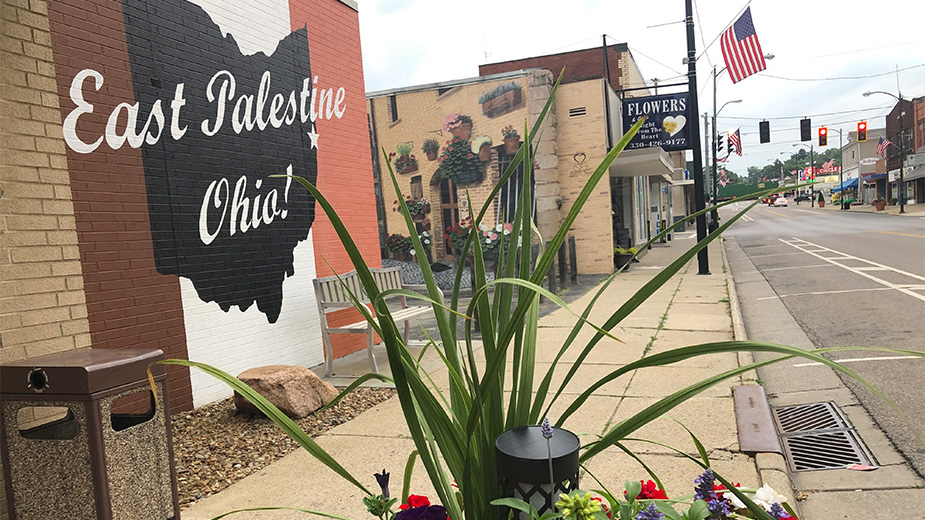This Labor Day, Operating Engineers Reflect on a ‘Great Man’
YOUNGSTOWN, Ohio – The business representative for the International Union of Operating Engineers Local 66 is taking time this Labor Day to remember one of its longest-serving members who died in June.
“I’m personally honored to have been able to spend time talking with this great man,” Local 66’s Brian Wydick said, reflecting on the influence and legacy of Daryl George Duffett, known to everyone as “Jim.”
Duffett died on June 7, just three days shy of his 101st birthday. In all, he spent nearly 80 years as a member of Local 66, engaged in building some of the most visible and important development projects across the Mahoning Valley, Wydick said. Baseball fields, factories, libraries, housing and countless other projects throughout the region were completed while Duffett manned his crane.
But Wydick noted that Duffett’s career in the Mahoning Valley is just a part of his lifetime of accomplishments.
Born in 1922, Duffett was among the generation that bore the brunt of the 20th century’s most turbulent and devastating periods – the Great Depression and the second World War. He grew up on a farm in Sandusky County, Ohio, before moving to the Mahoning Valley, where he secured work from a company contracted by the Pennsylvania Railroad.
“He grew up in farm country,” recalls Duffet’s son, Jim, of Raleigh, North Carolina. His father would eventually earn his union card as a crane operator while working alongside his father, George – a crane operator at a local steel mill.
In October 1942, Duffett joined the U.S. Navy and was assigned to the U.S. Navy Construction Battalion, more commonly known as the “Seabees.” He completed basic training in Rhode Island, and then in 1943 was shipped to North Africa, stationed near the port of Oran.
“I ran a crane most of the time,” Duffett recalled during an interview for PBS Western Reserve Television’s “Northeast Ohio War Stories.”
“We built pontoon causeways for the invasion of Sicily and Italy,” he said.
After additional training stateside, Duffett was shipped to Hawaii where he operated a crane and constructed additional pontoon causeways – this time in preparation for the assault on Iwo Jima in February 1945. He then disembarked on a hospital vessel that participated in the invasion.
After Iwo Jima, Duffett’s battalion was sent to the Philippines and then to Okinawa, ferrying supplies to Marines on the beachhead. Once Okinawa was secured, Duffett was dispatched to Guam, where he helped construct Quonset huts, pontoons and barges to be used for the invasion of Japan.
On Aug. 6, 1945, Duffet was aboard an LST – an acronym for Landing Ship, Tank – that would have been used to support the invasion when President Harry S. Truman announced the atomic attack on Hiroshima. The Japanese surrendered on Aug. 15.
Wydick said that 17,891 members of the International Operating Engineers served during the war; 273 of them were killed. Local 66 plans to recognize Duffett’s service and union work in its upcoming quarterly newsletter.
Duffett returned to Ohio and to farming for four years before heading back to Youngstown and the construction trades, Jim said. He married the former Louise Welther in 1952, and the family settled in Canfield.
Throughout his career with the Operating Engineers, Duffett exemplified the life of a proud union man, his son said.
“With Local 66, he helped put the steel up on Maag Library at Youngstown State University, did bridge work,” he said.
Among the more high-profile projects was Duffett’s role as a master mechanic during the initial construction of General Motors Corp.’s Lordstown Assembly plant in 1964. Duffett operated the crane that set the first bays of steel for the new plant. He also helped construct the original McCune Park baseball fields in September 1964 and Canfield High School’s Bob Dove field.
“He was an amazing crane operator and a strong union man,” his son said.
Indeed, it was Duffett who organized the first joint apprenticeship program between contractors and the Operating Engineers union during the mid-1960s, he said.
“It was the first apprenticeship program of its kind in the country,” the younger Duffett said, noting an earlier program was formed in California, but it was solely a union effort.
Moreover, Local 66’s program opened its doors to both women, Blacks and Hispanics during the 1960s, he said. “It broke down the color barrier and allowed women in the trades,” he said. “He used to say, ‘Everybody deserves the ability to be able to work. Everyone should get a fair shake.’”
Duffett also served on the executive board of Local 66 and as a business agent in the early 1960s. He also served as the first Democratic precinct committee member in Canfield. He would also volunteer at area schools to talk about his military service.
When it came to labor disputes, Jim said his father would strive to find an agreement that accommodated all parties. “He was one to say if you had to strike, you had to strike. But he always wanted to find common ground,” he said. “He knew if one side pushed too hard, it would come back and bite them.”
Jim said his father brought a valuable perspective that helped define the World War II generation. “It’s an important aspect that we’ve lost,” he said. “He was fortunate. He lived a good life.”
Pictured at top: Daryl “Jim” Duffett, front, is seen during his 100th birthday celebration. With him are Brian Wydick, left, I.U.O.E Local 66 business representative, and Jesse DiRenna, I.U.O.E. Local 66 president.
Copyright 2024 The Business Journal, Youngstown, Ohio.



